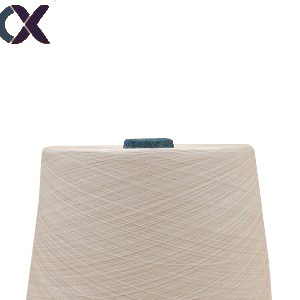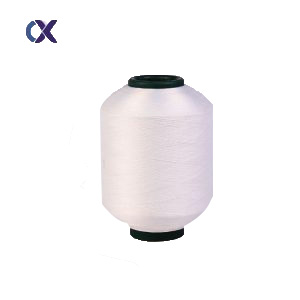- Chinese
- French
- German
- Portuguese
- Spanish
- Russian
- Japanese
- Korean
- Arabic
- Irish
- Greek
- Turkish
- Italian
- Danish
- Romanian
- Indonesian
- Czech
- Afrikaans
- Swedish
- Polish
- Basque
- Catalan
- Esperanto
- Hindi
- Lao
- Albanian
- Amharic
- Armenian
- Azerbaijani
- Belarusian
- Bengali
- Bosnian
- Bulgarian
- Cebuano
- Chichewa
- Corsican
- Croatian
- Dutch
- Estonian
- Filipino
- Finnish
- Frisian
- Galician
- Georgian
- Gujarati
- Haitian
- Hausa
- Hawaiian
- Hebrew
- Hmong
- Hungarian
- Icelandic
- Igbo
- Javanese
- Kannada
- Kazakh
- Khmer
- Kurdish
- Kyrgyz
- Latin
- Latvian
- Lithuanian
- Luxembou..
- Macedonian
- Malagasy
- Malay
- Malayalam
- Maltese
- Maori
- Marathi
- Mongolian
- Burmese
- Nepali
- Norwegian
- Pashto
- Persian
- Punjabi
- Serbian
- Sesotho
- Sinhala
- Slovak
- Slovenian
- Somali
- Samoan
- Scots Gaelic
- Shona
- Sindhi
- Sundanese
- Swahili
- Tajik
- Tamil
- Telugu
- Thai
- Ukrainian
- Urdu
- Uzbek
- Vietnamese
- Welsh
- Xhosa
- Yiddish
- Yoruba
- Zulu
- Kinyarwanda
- Tatar
- Oriya
- Turkmen
- Uyghur

Blogs
In the vast family of textile materials, staple fibre serves as a practical cornerstone. Although not as eye – catching as filament yarn, it has become an indispensable part of the textile industry thanks to its unique properties and extensive applications. From the clothes we wear daily to various textiles in our home life, staple fibre is everywhere.
I. Definition and Basic Concepts
Staple fibre refers to fibres with relatively short lengths, usually much shorter than filament fibres, generally ranging from a few centimetres to several tens of centimetres. Different from the continuous form of filament fibres, staple fibres need to go through the spinning process. Numerous short fibres are gathered and twisted to form yarns suitable for weaving. This fibre form endows staple fibres with characteristics that are distinctly different from those of filament fibres during subsequent processing and applications. Factors such as the length, fineness, and surface morphology of staple fibres all have a significant impact on the properties of the resulting yarns and fabrics.
II. Classification and Characteristics
(I) Natural Staple Fibres
- Cotton Fibre: Cotton fibre is one of the most common and widely used natural staple fibres. It comes from cotton plants. The fibres are slender and soft, with a kidney – shaped cross – section and natural convolutions. Cotton fibre has excellent moisture absorption, which can quickly absorb and release sweat from the human body, keeping people dry and comfortable. It also has excellent dyeing properties and can be dyed into various bright and vivid colours to meet different consumers’ needs for clothing and textile colours. In addition, cotton fibre has good heat retention and a soft hand feel, making cotton products the first choice for daily clothing and home textiles, such as pure cotton T – shirts, cotton quilts, and towels.
- Linen Fibre: Linen fibres mainly include flax and ramie. Compared with cotton fibres, linen fibres are coarser and harder, with higher strength and a natural, rough texture. It has extremely strong moisture absorption, even better than cotton fibre, and can quickly absorb and release moisture in a humid environment, so it is often used to make summer clothing, which is cool and breathable. Linen fibre also has good antibacterial properties and is not easy to breed bacteria, which makes it widely used in home textile products such as bed sheets and pillowcases. However, linen fibre fabrics are prone to wrinkling, which is a minor drawback in use.
- Wool Fibre: Wool mainly comes from the hair of sheep. The surface of the wool fibre is covered with a scaly layer, which gives wool its unique felting property. That is, after certain wet – heat and mechanical actions, the fibres will entangle and felt together. Wool fibre has excellent heat retention, making it a high – quality material for winter clothing and warm – keeping products, such as wool coats, wool sweaters, and wool blankets. In addition, wool has good elasticity, which can fit the body curves while maintaining a comfortable range of motion. But wool fibres also have some disadvantages, such as being prone to shrinkage and vulnerable to moth damage, so more attention is needed in maintenance.
- Short Silk Fibres: Although silk is famous for its continuous filaments, a certain amount of short fibres are also produced during the production process. Short silk fibres retain some of the characteristics of silk, such as a soft and smooth hand feel, good moisture absorption, and breathability. Due to their short length, they are usually blended with other fibres and used to make some mid – to high – end textiles, such as blended fabric clothing and bedding, to enhance the texture and performance of the products.
(II) Chemical Staple Fibres
- Viscose Staple Fibre: Viscose staple fibre is made from natural cellulose (such as wood and cotton linter) through chemical treatment and spinning processes. It has similar moisture absorption and dyeing properties to cotton fibre, with a soft hand feel and comfortable wearing experience. Viscose staple fibre fabrics have good drape and are often used to make shirts, dresses, underwear, and other clothing, as well as home textile products such as curtains and sofa covers. However, viscose staple fibre has low wet strength and is prone to deformation in a wet state, so it needs to be handled with care during washing and use.
- Polyester Staple Fibre: Polyester staple fibre is an important variety of chemical staple fibres, belonging to the same polyester fibre family as polyester filament yarn. It has characteristics such as high strength, wear resistance, wrinkle resistance, and good dimensional stability. Polyester staple fibre is often blended with natural fibres or other chemical fibres to make up for the deficiencies of natural fibres and give full play to its own advantages. For example, polyester – cotton blended fabrics combine the wear resistance of polyester staple fibre and the moisture absorption of cotton fibre, and are widely used in various types of clothing, especially work clothes and school uniforms that require high durability.
- Acrylic Staple Fibre: Acrylic staple fibre has an appearance and hand feel similar to wool, so it is also known as “synthetic wool”. It has good heat retention, is lightweight, and has excellent light resistance. Even after long – term exposure to sunlight, it is not easy to fade or age. Acrylic staple fibre is often used to make wool yarns, blankets, sweaters, and other products. It can also be blended with wool to reduce costs while maintaining the heat retention and appearance texture of the products.
- Nylon Staple Fibre: Nylon staple fibre has excellent abrasion resistance, ranking first among natural and chemical fibres. In addition, it has good elasticity and moisture absorption, and can quickly return to its original shape without easy deformation. Nylon staple fibre is often used to make socks, sportswear, ropes, and other products. In these application scenarios that require frequent friction and stretching, the performance advantages of nylon staple fibre are fully demonstrated.
III. Production Process
The production process of staple fibres varies depending on the type and source of the fibres. For natural staple fibres, taking cotton fibre as an example, first, the picked cotton needs to be ginned to remove the cotton seeds and obtain lint. Then, through processes such as opening and cleaning, carding, the cotton fibres are combed into a single – fibre state, and impurities and short fibres are removed. Finally, through spinning processes such as drawing, roving, and spinning, the single fibres are gathered and twisted to form cotton yarn.
The production of chemical staple fibres is relatively more complex. Taking viscose staple fibre as an example, the natural cellulose raw material is first chemically treated to make cellulose pulp. Then, the pulp is dissolved in a specific solvent to make the spinning dope. After filtration and degassing, the spinning dope is extruded through a spinneret into a coagulation bath to solidify into filaments. The filaments go through post – treatment processes such as stretching, washing, and oiling, and are finally cut into staple fibres of a certain length. In the production process of chemical staple fibres, the control of process conditions is extremely strict to ensure that the quality and performance of the fibres meet the requirements.
IV. Application Fields
(I) Textile and Apparel Industry
Staple fibres are widely used in the textile and apparel industry. Various natural and chemical staple fibres are used to produce a rich variety of fabrics through different blending and interweaving methods, meeting people’s needs for the comfort, aesthetics, and functionality of clothing. For example, pure cotton fabrics are soft and comfortable, suitable for making close – fitting clothes; polyester – cotton blended fabrics combine durability and moisture absorption and are often used for making daily casual wear; wool – acrylic blended fabrics are warm and affordable, and are a common choice for winter clothing. From high – end fashion to fast – fashion clothing, from professional sports gear to ordinary underwear, staple fibres are everywhere, providing diverse choices for people’s wearing.
(II) Home Decoration Field
In the field of home decoration, staple fibres also play an important role. Home textile products such as curtains, sofa covers, and bed sheets made of natural staple fibres such as cotton and linen add warmth and comfort to the home environment with their natural texture and good breathability. Chemical staple fibres such as polyester staple fibre and acrylic staple fibre, due to their durability and ease of care, are often used to make home accessories such as carpets and cushions, which are not only beautiful but also can extend the service life of home products. In addition, some special functional staple fibre fabrics, such as those with antibacterial, anti – mite, and flame – retardant properties, are gradually being applied in the home decoration field, creating a healthier and safer living environment for people.
(III) Industrial Application Field
Staple fibres also have an indispensable position in the field of industrial textiles. For example, in filter materials, filter cloths made of staple fibres can effectively filter impurities in liquids and gases and are widely used in industries such as chemical engineering, environmental protection, and food. In the case of geotextiles, staple fibre geotextiles have good tensile strength and water permeability and can be used in projects such as road construction and dam reinforcement. In the field of nonwovens, nonwoven fabrics made from staple fibres through processes such as needling, spunbonding, and melt – blowing are applied in many fields, including healthcare, agriculture, automotive interiors, etc., such as masks, surgical gowns, seedling pots, and automotive sound – insulation cotton.
V. Future Prospects
With the continuous progress of science and technology and the increasing requirements for the quality of life, the development of staple fibres will also face new opportunities and challenges. On the one hand, the research and development of new staple fibre materials will continue to advance.
Previous News
M-type Metallic Yarn: Weaving Elegance and Func...Next News
Crochet Yarn: Art and Warmth at Your FingertipsShare:
Feature Product
-
 Wool yarn
Wool yarn1.Product Introduction Wool yarn, often also kn...
-
 Viscose yarn
Viscose yarn1.Product Introduction Viscose yarn is a popula...
-
 Spandex Yarn
Spandex Yarn1.Product Introduction Elastane, another name f...
